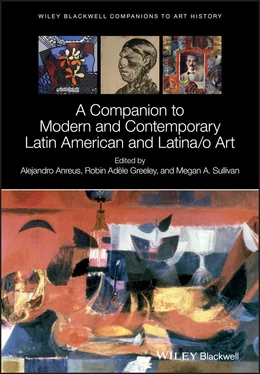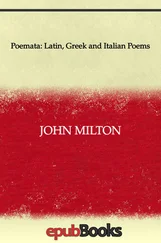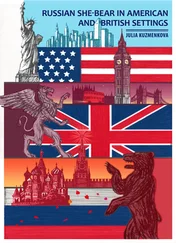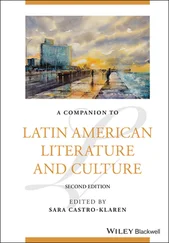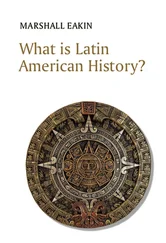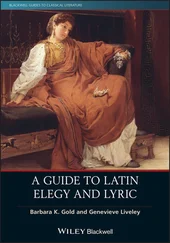Dana Arnold, 2021
Introduction: Latin American and Latina/o Art
Alejandro Anreus, Robin Adèle Greeley, and Megan A. Sullivan
Some fifteen years ago in Paris, the Czech‐born French writer Milan Kundera commented on how he imagined it must be to be a Latin American artist, writer, or intellectual. With so many countries in Latin America sharing a language, culture, and history, he envisioned a robust and fruitful exchange. Speaking from the viewpoint of the linguistic confusion of the old Austro‐Hungarian Empire, where no such community was possible, and from the perspective of a writer who had begun to write in French rather than his native Czech, he imagined something of an organic cultural, and even spiritual community; he was saddened to learn from his Peruvian interlocutor that this was often not the case (Lauer and Oquendo 2004, para. 11).
The Polish art historian Piotr Piotrowski, in a 2012 interview, grouped Eastern Europe and South America together under the rubric of their shared complex relationship with the culture of Western Europe, when compared to what he saw as more radical differences in South Asia, East Asia, and Africa. “Our knowledge,” he argued in relation to Eastern Europe, “has been developed under the same umbrella as the West, under the same episteme as the Western one; we are a ‘close Other’ or ‘not the real Other’” (András 2012, para. 10).
These two brief anecdotes point to the fact that defining Latin America – or Latin American art – either as a shared sense of identity or in contradistinction to the “West” is no simple task. Luis Alberto Sánchez remarked, somewhat flippantly, “How could there not be a ‘Latin America’ when people talk so much about it?” Yet as he began to dig deeper, he noted that its supposed “indestructible unity” was rather difficult to pin down (Sánchez 2012, p. 132). Indeed, the region's very existence as an historically stable entity is hardly a given; it is neither a nation‐state nor a continent (and so neither a clearly bounded political nor geographic category), and both its meaning and the terms used to talk about it have shifted along with the purposes for which it has been used, both within and outside of the region. As the historian Michel Grobat has explained, “Americano” was embraced by colonial elites waging wars of independence against Spain in the nineteenth century, whereas “Hispano‐América” was adopted in the 1830s to differentiate the region from an increasingly expansionist United States (Grobat 2013, p. 1349). The idea of a “Latin race” developed in early nineteenth‐century Europe, and was applied to the Americas as a way of justifying France's imperial ambitions. For some, the imperial origins of the term and its status as a racial category that excludes huge swaths of the population not descended from Europeans are enough to dismiss it, whereas others have embraced its implicit power as an anti‐imperial category. Many subsequent efforts to define Latin America likewise came from outside, from the Cold War United States as well as from Latin American writers and intellectuals settled abroad. Regardless of its motivations – to pull the region into the orbit of a foreign power or to resist the imposition of those same powers – a distant view has often accompanied these discussions. Brazilian scholar Idelber Avelar (1997) argues that Latin America is “not a sovereign subject, but one which is produced in the very act of producing its object” and thus might be best approached via a genealogical method capable of tracking its various definitions and redefinitions. Latin America is a region marked by continuities – language, religion, colonial past, and its relationship to Western Europe and the United States – but also by contrasts, producing a remarkable heterogeneity and cultural richness that nevertheless jeopardize efforts to find commonalities.
Similar tensions between continuity and contradiction hold true for any effort to define “Latina/o.” Apart from residence in the United States, how are we to group such diverse cultures, histories, and politics as those of the Dominican and Puerto Rican diasporas in the US East, the Mexican‐American communities of the Southwest, the Cuban‐American enclaves in Miami and New Jersey, or the growing number of people migrating to the United States from Central America? Much like “Latin American,” “Latina/o” is not always a category used by those it purports to identify. People are far more likely to see themselves as Chicano, Puerto Rican, or Dominican and to feel a sense of shared culture with these narrower categories.
Moreover, how we might define the relationship between “Latina/o” and “Latin American”? This connection is sometimes fraught, even antagonistic (thus Mexican poet Octavio Paz's rejection of the Mexican‐American “pachuco,” the long‐standing rivalry between Cubans and Cuban‐Americans, or the increasing militarization of the US‐Mexico border); at other times, the concept of Latin America has served Latina/o communities as a means of constructing an identity and a cultural imaginary both for diasporic populations and for long‐standing citizens and residents of the United States (recall, for instance, the Chicana/o homeland of “Aztlán”; Miami, a mixture of peoples from all corners of the hemisphere, designated the unofficial capital of Latin America; or New York City as it rivals Puerto Rico itself as the place Nuyoricans call home).
If these ideas are unstable and shifting entities, then appending “art” to them only adds a further layer of complication. For decades, critics, scholars, and artists have debated whether such categories, which necessarily impose restrictions and norms onto deeply heterogeneous bodies of work, are meaningful or productive. “There is no such thing as Latin American Art,” asserted curator and art critic José Gómez Sicre in 1990. There is, rather, “art made by Latin Americans, which begins in the nineteenth century. Before this we have pre‐Columbian and colonial art.” 1 Gómez Sicre's doubts have been echoed many times over, perhaps even more vociferously in the twenty‐first century, where globalization has put increasing pressure on the boundaries demarcated by area studies. The Cuban critic Gerardo Mosquera has recently cast doubts on the possibilities of the category “Latin American art” to do little more than cast its producers as derivative or exoticized in the global art world.
Yet these categories have persisted, in part because they have served as a strategic platform from which to articulate crucial commonalities in the face of European and mainstream US art practices. Rita Eder, for example, argued in 1979 that “Latin America” remained a crucial category insofar as it allowed artists and theorists to create and work within their own frames of reference for “understanding, placing, scorning or applauding” art from the region, rather than relying on those frameworks originating in Paris and New York (Eder 2012, p. 684). Even the critic Marta Traba, who had written vociferously against collective categories' imposition on individual artistic freedom in the 1950s, eventually came to see them as crucial tools for cultivating a “culture of resistance” against US cultural imperialism (Traba 2012, p. 751).
This book, as a collective effort encompassing a range of voices, does not subscribe to any single answer to these questions. Yet despite the difficulties inherent in defining “Latina/o” and “Latin American” along with their respective artistic productions, it proposes that something meaningful is produced in the collective study of the region and its diasporas. Inquiry into these terms, for instance, provides new insights into how we might define those grand categories: “modern” and “contemporary” art and what their various meanings are in shifting contexts. The coincidences and divergences that the reader encounters between standard ways of demarcating periods in the histories of Euro‐American modern and contemporary art and the divisions within this book point to the fact that Latin American art can neither be collapsed with, nor fully separated from other histories of modernism or from global histories of the twentieth century in general. For example, 1945 stands as perhaps the most central division in the history of Euro‐US modernism, and it appears here as well. We see the sharp shift in the postwar world, in which the wartime devastation of Europe resulted in a concentration on the Americas as a site of renewed utopian energies on all fronts, whether economic, political, social, or aesthetic. But other divisions are equally important. For example, 1910 and 1959 mark the two most important revolutionary moments in twentieth‐century Latin America. The new modes of popular, revolutionary art that followed in the wake of the Mexican Revolution and Cuba's anti‐imperialist and utopic project became sources of inspiration that would echo throughout the Americas, providing inspiration for artists far beyond the contexts of these battles.
Читать дальше
